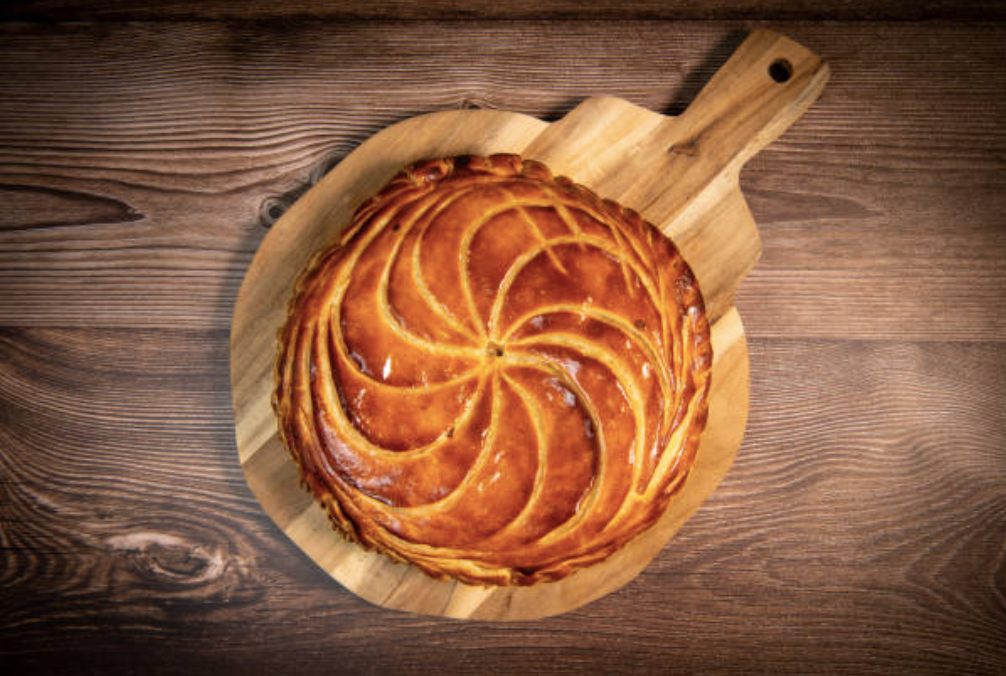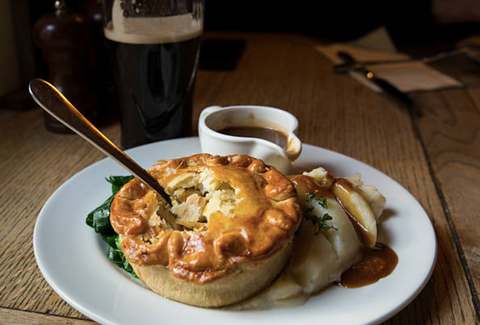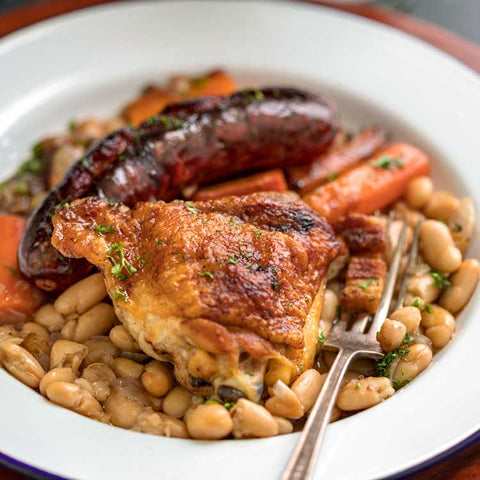What is frangipane tart?
Frangipane tart is a classic dessert, best described as an almond custard tart.
A traditional French dessert, the frangipane tart is not as popular in the United States as in Europe. However, the custard filling could be used for desserts, including cakes and tarts. The tart crust can also be used to make cookie crusts.
The dessert had its origins in the 17th century when the chef of King Louis XIV created a type of almond-paste pastry. This pastry was given the name frangipane after the marquis Frangipani, who made a plumeria flower-scented perfume famous at the time.
In its simplest form, frangipane tart is made with two main ingredients. The first is flour and butter blended to create dough for the shell of the tart. The second ingredient is an almond cream or custard inside the tart shell. Eggs are added to this mixture for extra richness and texture in some recipes. In addition, some cooks may add lemon zest or orange zest to give an extra kick of flavor to the cream.
Frangipane tart is a dessert
Frangipane is a sweet, rich filling of almonds, eggs, and butter. It is popular in desserts such as tarts, pastries, cakes, and cookies. But, most importantly, it can be made at home!
Cold frangipane is the perfect filling for tarts.
The ingredients are blended and then baked over a tart shell (or pie crust) to provide a flavorful, nutty base for all sorts of fruits. This article tells you everything you need to know about frangipane.
Name of frangipane tart
Frangipane is a pastry cream made with ground almonds. It's often used as a filling for cakes and tarts, but it can also be piped into small rounds or other shapes and baked on its own as "frangipane tartlets" (the French name is frangipane tartelette).
The dessert's name comes from an Italian noble family known for inventing perfumes in the 16th century. Frangipane itself is a combination of two words: "frangere," which means "to break," and "pane," which means bread. The name may refer to the almond flour used in the recipe, which crumbles easily.
Taste of frangipane
Frangipane is a sweet pastry cream made with butter, sugar, eggs, and almonds. It can be used as a filling for tarts and pastries or in cakes and baked desserts.
The primary taste of frangipane is a rich combination of almonds, butter, and eggs. The sweetness of the sugar balances out the intense flavors of the other ingredients.
Frangipane has been described as being similar to marzipan. Both contain almond paste and are often used as fillings for cakes and pastries. Marzipan, however, tends to be sweeter than frangipane because it uses more sugar than almonds during preparation.
Frangipane is like a custard or cake?
The answer is mostly cake, but a unique texture makes it a little more versatile than the typical cake batter.
Frangipane is made by combining an egg and butter mixture with ground almonds. The butter can be either creamed into the egg yolks or melted and added to the beaten egg whites. The almonds are most commonly ground to a paste-like consistency, making for a very moist filling somewhere between cakes and custardy.
Frangipane isn't just used in tarts — you may also know it as frangipane cream or almond cream, which is when it's used as a filling in pastries like croissants or fruit tarts. It's also sometimes used as a layer in cakes or coffee cakes.
Frangipane and Marzipan
They're closely related but not the same. Marzipan is made from a paste of ground almonds, sugar, and egg whites. Frangipane is similar to marzipan in texture, and both can be molded into different shapes, but frangipane has a more cake texture than marzipan because it includes flour.
Frangipane can be used as a filling, mixed into the dough, or even dipped fruit slices. You can find it in many forms, including tubes, jars, and cans. It's also easy to make at home by combining all the ingredients and using them immediately or storing them in your refrigerator for later use.
Is frangipane tart need to be refrigerated?
No, but be careful about leaving it out. It's best to store any pastry with a custard-like filling in the refrigerator.
If you're serving it within a couple of days of baking, though, it can stay at room temperature. Just don't leave it out for more than a few hours at a time, and use common sense — if you're in doubt about how long it's been sitting out, just put it in the fridge.

The point Frangipane is cooked
Frangipane is an almond-flavored tart filling made from ground almonds, butter, egg, and sugar. It's similar to marzipan inconsistency but less sweet, with a more subtle almond flavor.
The most common way of baking it is in a tart case. You can blind bake the pastry first or pour the frangipane into the uncooked pastry and bake it all together. As long as the pastry is cooked through, the frangipane will be cooked too.
- Frangipane is cooked when puffed up and gone slightly golden around the edges. When you poke it with your finger, it should spring back. You can also use a skewer to test if it's cooked inside – if it comes out clean, then it's done (unless there's melted chocolate in there!).
- Frangipane is done when the top looks dry and is lightly golden brown. The sides should start to pull away from the pan a bit, and if you stick a toothpick in the middle, it should come out clean with only a few moist crumbs attached.
You can also test for doneness by gently pressing on the top of the frangipane filling in the center. If it springs back up, it's done.
Consistency of frangipane
Frangipane is a delicious almond pastry cream, and I discovered it during my quest to find a delightful pastry cream that would be set up correctly.
I like frangipane because it's simple to make and delicious, and it sets up very well, assuming you use the correct ratio of custard to almond flour.
- In general, frangipane is supposed to be relatively thick and creamy. When you're trying to pipe it into a tart crust, you should be able to do so with a pastry bag or an offset spatula. In the finished tart, the frangipane should not be sloppy or runny; it should hold its shape.
I've never made frangipane before, but I have made almond paste. The consistency of nut pastes is a pretty important factor in their final use. In general, the more liquid a nut paste is, the more likely it is to be used in baked goods where it will set to a more solid state (a cake or tart, for instance).
As for your recipe, I would try it out and see what happens! Perhaps add 1/4 of the almond flour at a time to your egg mixture and see how that goes. You may want to start by mixing it with some ground almonds. As the others have said, you can always make some adjustments after baking it.
Frangipane can be frozen
Frangipane freezes very well if you are using it as a cake filling. Make sure it is completely cool before freezing. In the freezer, it will last for up to 3 months.
If you use frangipane as a tart filling, I wouldn't recommend freezing it. When the tart is baked, the frangipane tends to rise slightly in the center, and you may get cracking of the top and sides if the frangipane has been frozen and then thawed.
Texture of frangipane
Frangipane is almond-based custard that can be used as a filling in pastries, cakes, and pies. It is thick enough to be easily spreadable, with a soft buttercream frosting consistency but will set when cooked.
- Frangipane should be smooth, creamy, and free of lumps. This can be difficult to achieve at home if you're not using a blender or food processor, although it's possible to make it by hand with a bit of patience (and some sore arm muscles).
- The texture of frangipane is similar to that of pastry cream — it's thick enough to fill pastries or between cake layers, but it won't hold its shape once piped. Try making an Italian meringue buttercream instead if you want something set up like buttercream frosting.
Fixing a broken frangipane tart
I'm not an expert on frangipane, but I will share a few thoughts on saving it.
- If you've added too much egg, and the mixture is runny, you can't take out the eggs; they will have already begun to cook. You may be able to add more almond meals but bear in mind that this will change the flavor of your frangipane.
- Alternatively, you could add some extra butter and sugar; this would give it more structure and improve its taste.
If you've added too much almond meal, then adding more butter and sugar would probably help. However, if you accidentally put in plain flour instead of almond meal (or vice versa), then there's nothing that can be done to fix that.
Tips for fixing broken frangipane tart
- When I'm using a tart pan with a removable bottom, it's almost always for a frangipane tart, that rich and nutty almond-flavored filling that's somewhere between cake and pudding but is (oh so) much better than either.
- I've made dozens of different frangipanes in my time and have never had one go wrong, but this one did. First, it had risen beautifully in the oven, and then as soon as I took it out of the range, it shrank down to half its size.
- I was making an apple frangipane tart — my favorite — and I'd used less flour than I usually do because the apples were releasing a lot of juice while they baked.
- I cut into the tart before it cooled down (which was silly of me), and the filling seemed just fine.
- It was creamy and smooth in texture but tasted bitter and overly salty. I think what happened is that when the frangipane collapsed once it left the oven, some of the butter that had melted into the batter rose to the top. But, of course, that wouldn't have been a problem if I hadn't cut into it right away.
Reheating Frangipane Tart?
Yes, you can reheat frangipane tart, be careful not to dry it out. If you've got a microwave, cover your frangipane tart with cling film and warm it for 10 - 15 seconds at a time until heated through. Alternatively, pop it in the oven with a bit of foil over the top for about 10 minutes at 180C/160C fan/gas 4.
Store Frangipane Tart
Frangipane is a classic French filling for cakes, tarts, and pastries. It's made with butter, sugar, eggs, and ground almonds, so it's pretty similar to an almond paste.
To use frangipane from the refrigerator, gently re-whisk it until smooth. Then bring it to room temperature before using.
Fillings of Frangipane
The frangipane is an excellent basic tart filling, but it is also a fantastic base for all sorts of delicious variations.
Here are some of my favorite combinations:
- Sweet potatoes, maple syrup, and dates
- Chocolate and hazelnuts
- Cherry and almond (basically the same as the original recipe)
- Lemon curd and pistachios
You can use it to fill fruit tarts, as well as crostatas and galettes. You can also bake it into cakes by itself or with fruit folded in (like this plum frangipane tart).
Frangipane makes a great pie filling. This recipe is written for one 9-inch pie. Double the recipe if you want to fill two pies (or two galettes).
Almond, strawberry, pear frangipane tart
Frangipane Tart is delicious
A frangipane tart is a dessert that consists of a short crust pastry shell filled with frangipane.
Frangipane is an almond-based filling that consists of butter, sugar, eggs, and ground almonds. It can be used in many other desserts as well.
- Frangipane tarts are delicious, but they can be tricky to make. The preparation is simple enough, but getting the pastry shell to bake correctly. As a result, a soggy bottom is the bane of most tart-makers.
- The trick to making a frangipane tart successfully is to make sure that the pastry shell cooks through before you add the filling and put it back into the oven. To do this, you have to blind bake your crust.
The easiest way to blind bake a crust is with pie weights or dry beans. Line the pastry crust with parchment paper and fill it with pie weights (or dried beans). Then bake it until it's fully cooked through.




